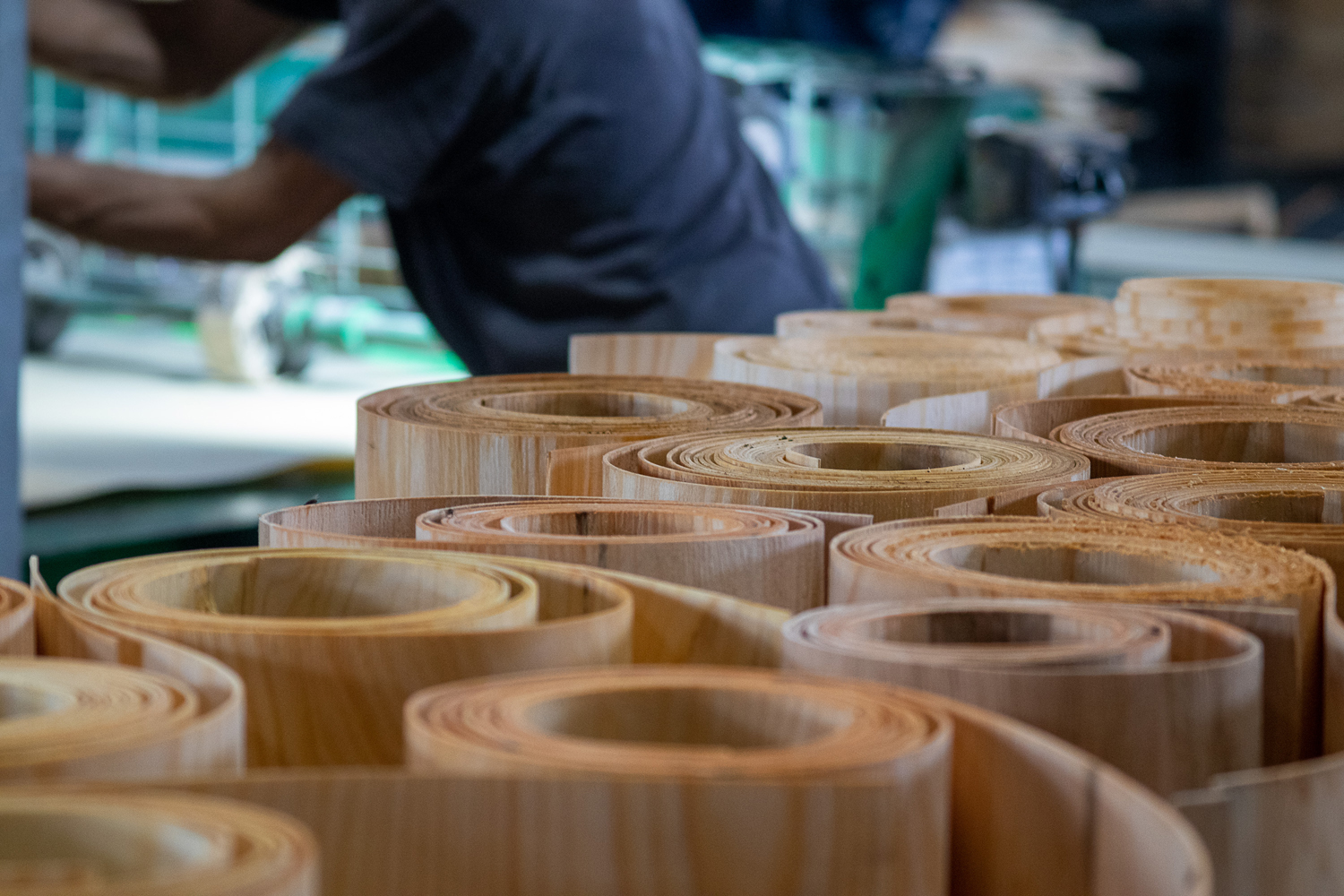
Logs from broadleaf trees are thinly stripped using a machine called a rotary lathe and plied in multiple layers to make plywood used for furniture, interior construction materials, and other products.

Logs from broadleaf trees are thinly stripped using a machine called a rotary lathe and plied in multiple layers to make plywood used for furniture, interior construction materials, and other products.
The unprecedented plywood known as Paper-Wood was introduced to the world in 2010. Takizawa Takahiro, President of Takizawa Veneer, sat down with us.
“After graduating from university, I worked for a travel agency in Tokyo, but when my father turned 60, I returned to Ashibetsu and trained at a local veneer manufacturer before joining Takizawa Veneer. At the time, there was no one working in sales, so I created a sales department and began sales activities on my own.”
At the time, sales were on the decline, and Takizawa said, "I wanted to create our own products that would have an impact." In order to get inspiration for new ideas, he went to a design-related exhibition in Tokyo, found a booth called Plywood Research Institute, and came across two design studios. They produced commercially available plywood sheets with fabric, acrylic, colored paper, and other materials inserted between them, and exhibited their original works. Takizawa had a hunch that this would be interesting, and together they began product development.
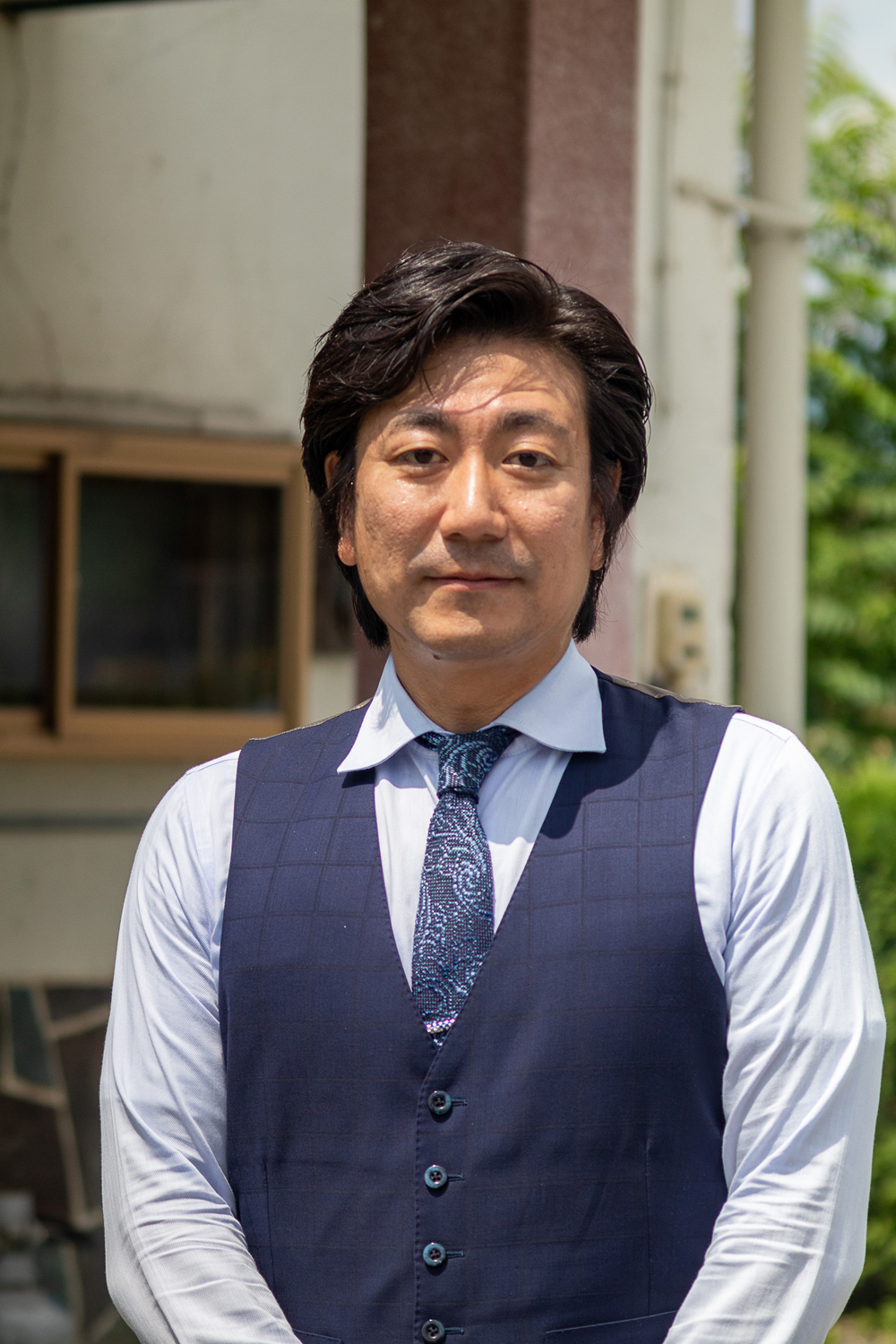
Takizawa Takahiro
After many prototypes, Takizawa Veneer was able to mass-produce Paper-Wood, which is made by stripping 1mm-thin veneers of Japanese white birch thinnings from Hokkaido and plying them with 0.5-0.8mm colored recycled paper. When presented at a building materials exhibition in Tokyo in 2010, Paper-Wood garnered the attention of architects and building professionals in Japan.
“At first, sales were slow, but after three or four years of exhibiting at trade shows in Tokyo, sales gradually increased, and inquiries began coming in from overseas. However, exporting Paper-Wood in boards was expensive in terms of transportation costs, and the temperatures rose when transported in containers, making it difficult to guarantee quality and resulting in the company refusing sales.”
Because exporting Paper-Wood as boards was difficult, they decided to make and sell products, and started a product line PLYWOOD laboratory in 2015. The design studio, which is the creator of the line, took charge of the design, while processing was commissioned to woodworks in Asahikawa and Higashikawa. Takizawa Veneer began selling stools, paperweights, clocks, and other products that make the most of the characteristics of Paper-Wood with all the buyers being overseas.
“We exhibited our products at an exhibition in Paris in an effort to establish a track record abroad first.”
When they exhibited at Maison & Objet, one of the world's most prestigious interior and design exhibitions in Paris for three years starting in 2016, their booth attracted many visitors starting from year one. In the second year, they were selected to sell their products at the Victoria and Albert Museum in England and the Museum of Modern Art (MoMA) in New York City.
“When I informed the designer that we had been awarded a contract with MoMA, they were very impressed with that.”
In 2021, the company delivered stools in original colors to Google's headquarters. Together with these activities, the number of business contracts in Japan is also increasing.
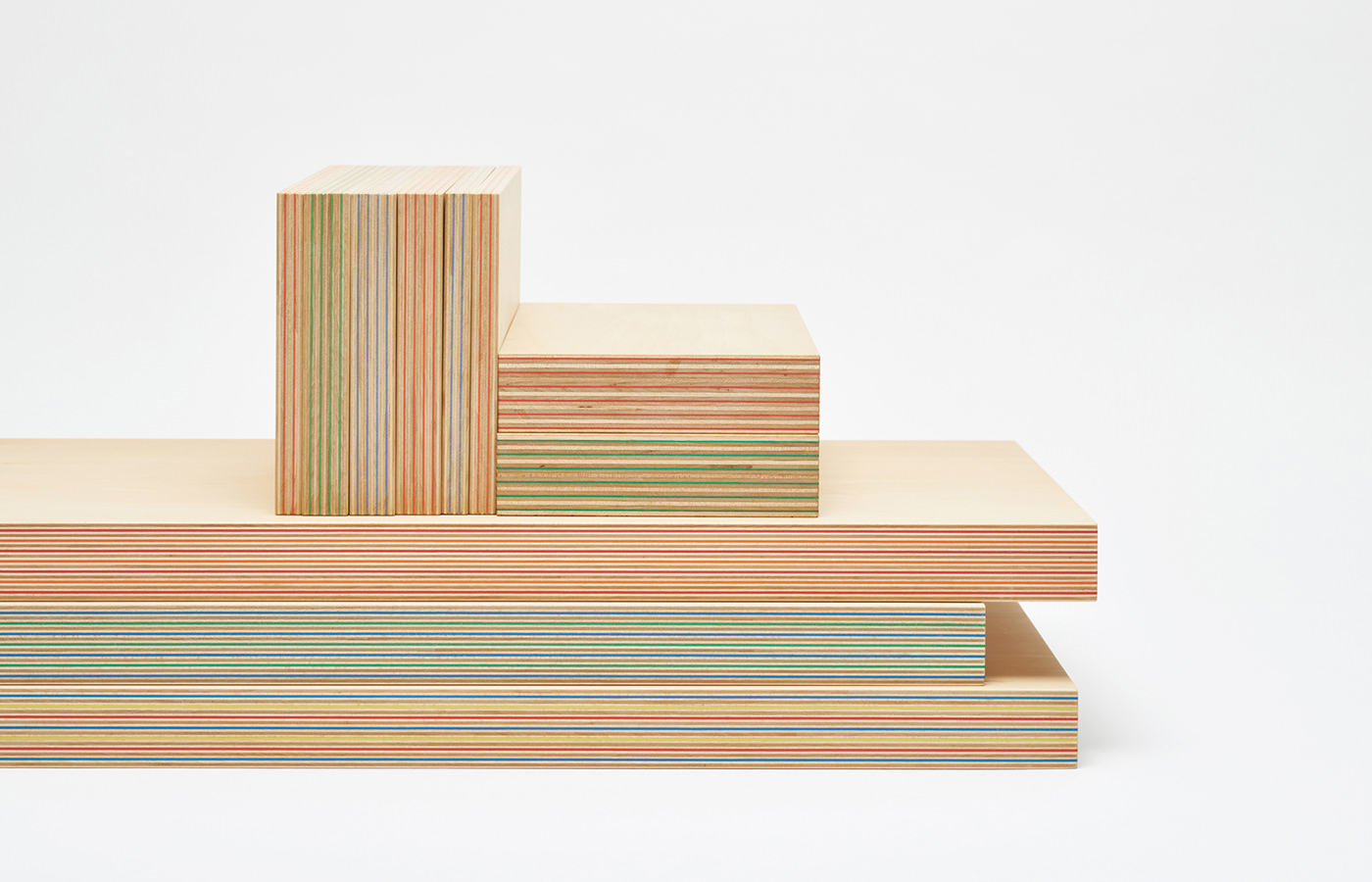
Paper-Wood features colored paper and wood laminated to create a wood grain (courtesy of PLYWOOD laboratory)
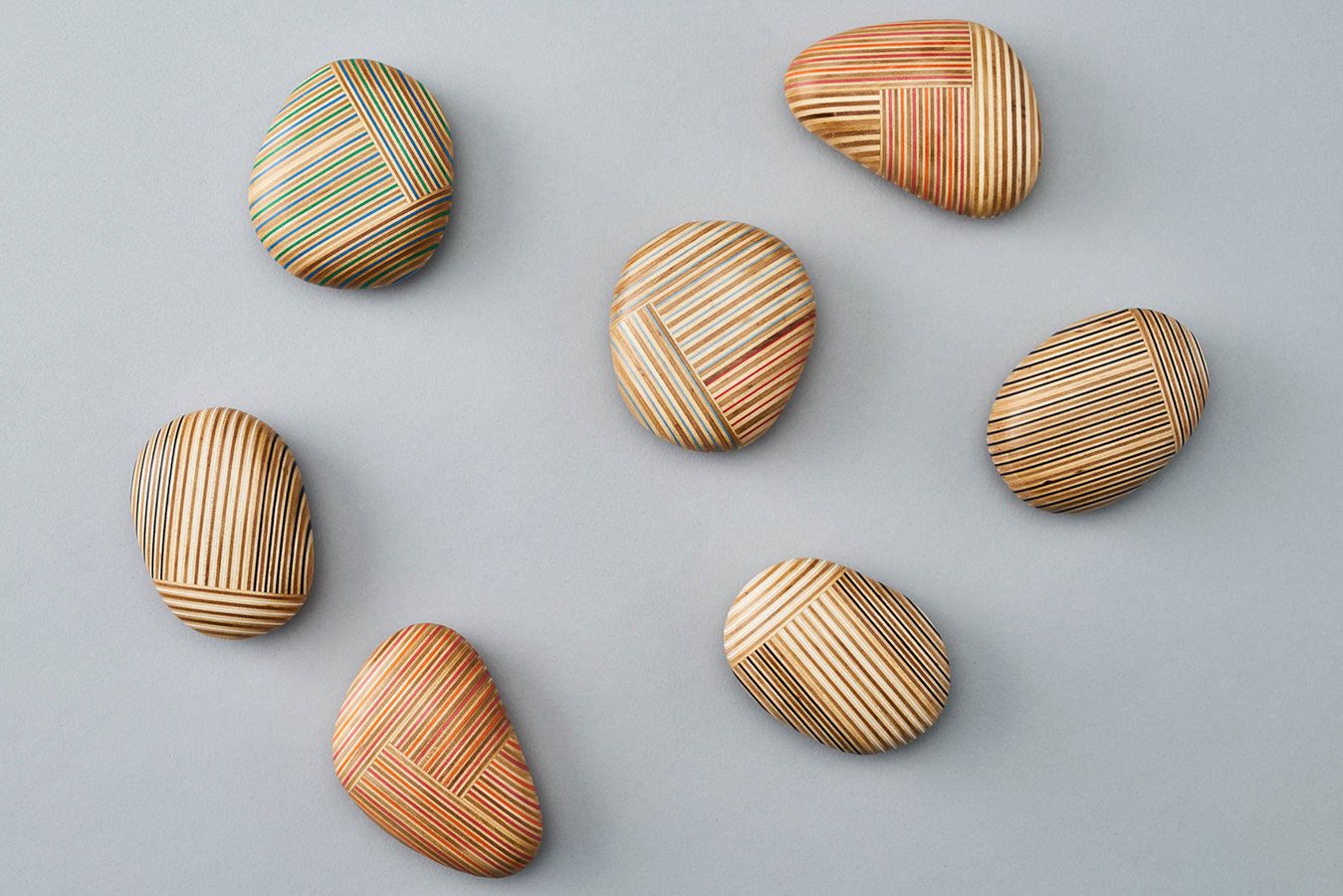
Paperweight koishi (courtesy of PLYWOOD laboratory, designed by DRILL DESIGN)
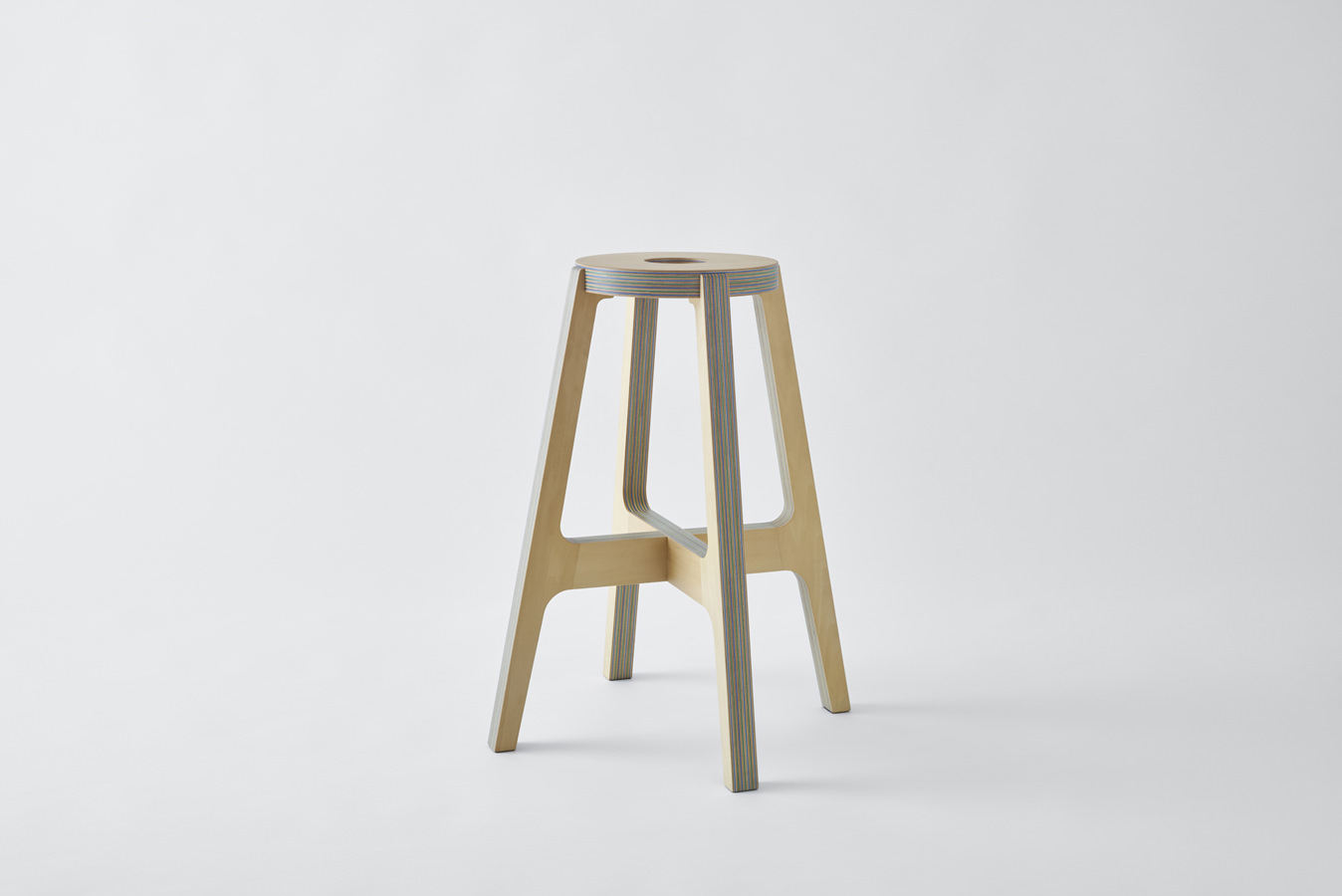
PW stool (courtesy of PLYWOOD laboratory, designed by DRILL DESIGN)
In Japan, Takizawa Veneer continued to sell Paper-Wood mainly to design firms and other customers. At that time, the price difference between Paper-Wood and regular plywood was about 10 times higher, but as they continued to put efforts into sales, they began to receive more and more orders.
As Paper-Wood started to attract attention, the spotlight began to focus on products that were already on the market. For example, "Eco Birch Plywood," made from Japanese white birch thinnings from Hokkaido, was widely used for desks, chairs, and shelves in preschools, kindergartens, schools, etc., with orders increasing rapidly.
Of course, the foundation of these products is the technology that supports quality.
For example, in plywood with many layers, such as Paper-Wood, the slightest variation in the thickness of a veneer can ultimately lead to a deviation of 1 mm or more. Therefore, Takizawa Veneer strips veneers with an accuracy of plus or minus 0.05 mm.
Although it is the machine that does the milling, the touch of the craftsmen who make the adjustments is a significant factor.
“We can make a wide variety of plywood. We may be the smallest plywood manufacturer in Japan, but our prices are the highest. We have been doing what others do not do, and that is why people have come to choose us. Our continued efforts are starting to pay off.”
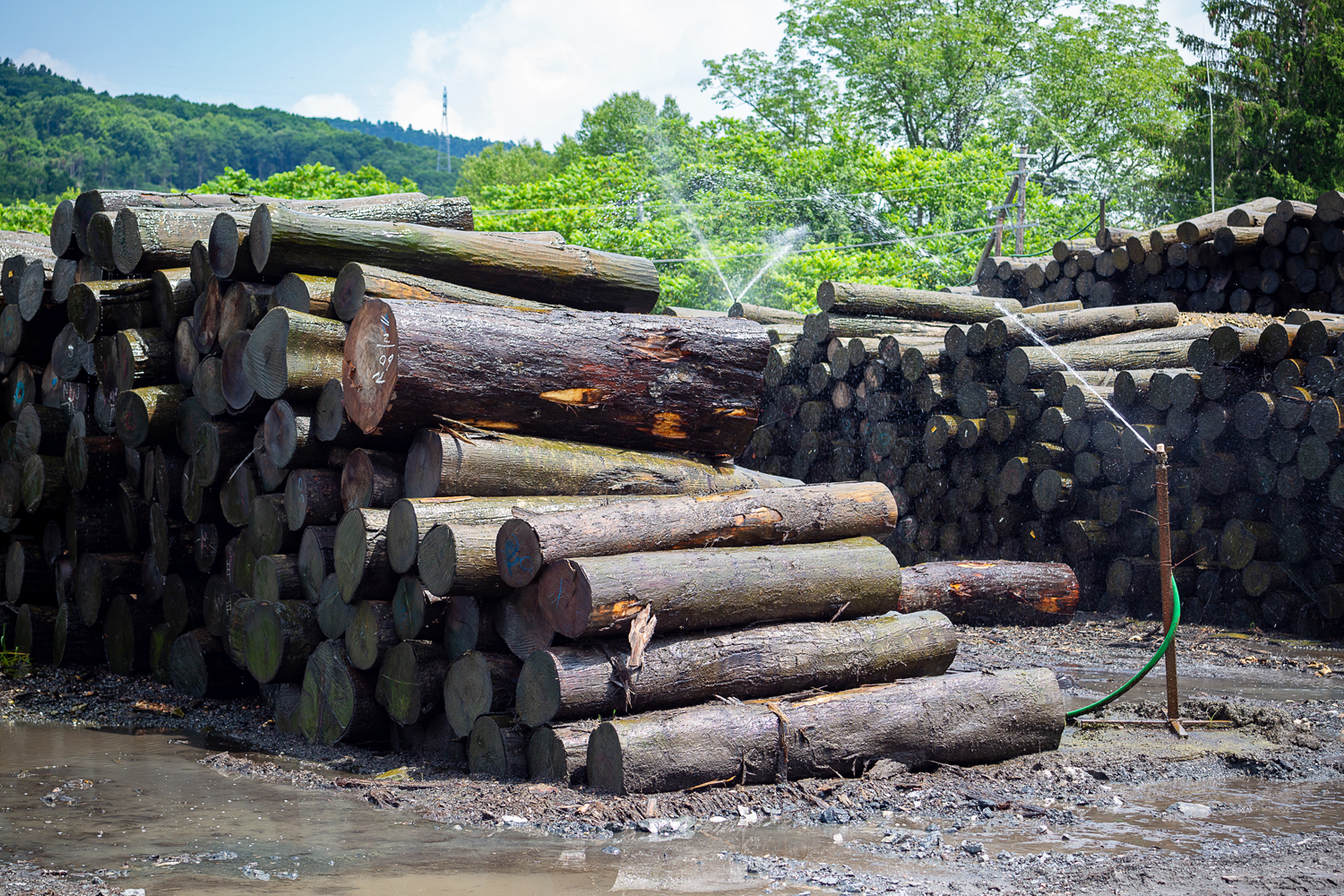
Logs stored next to the factory
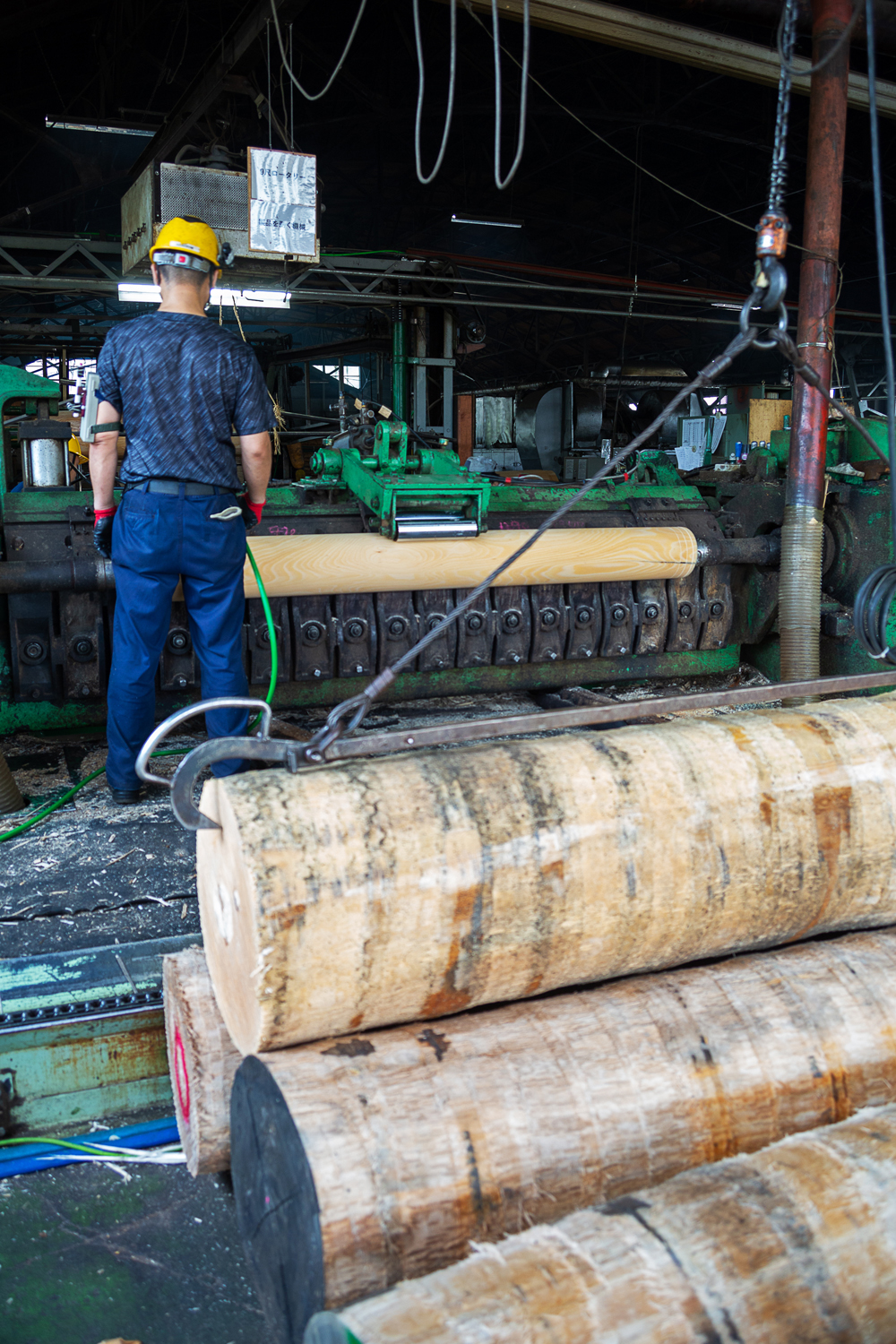
The thin stripping of logs is an important process which requires the human touch for subtle adjustments
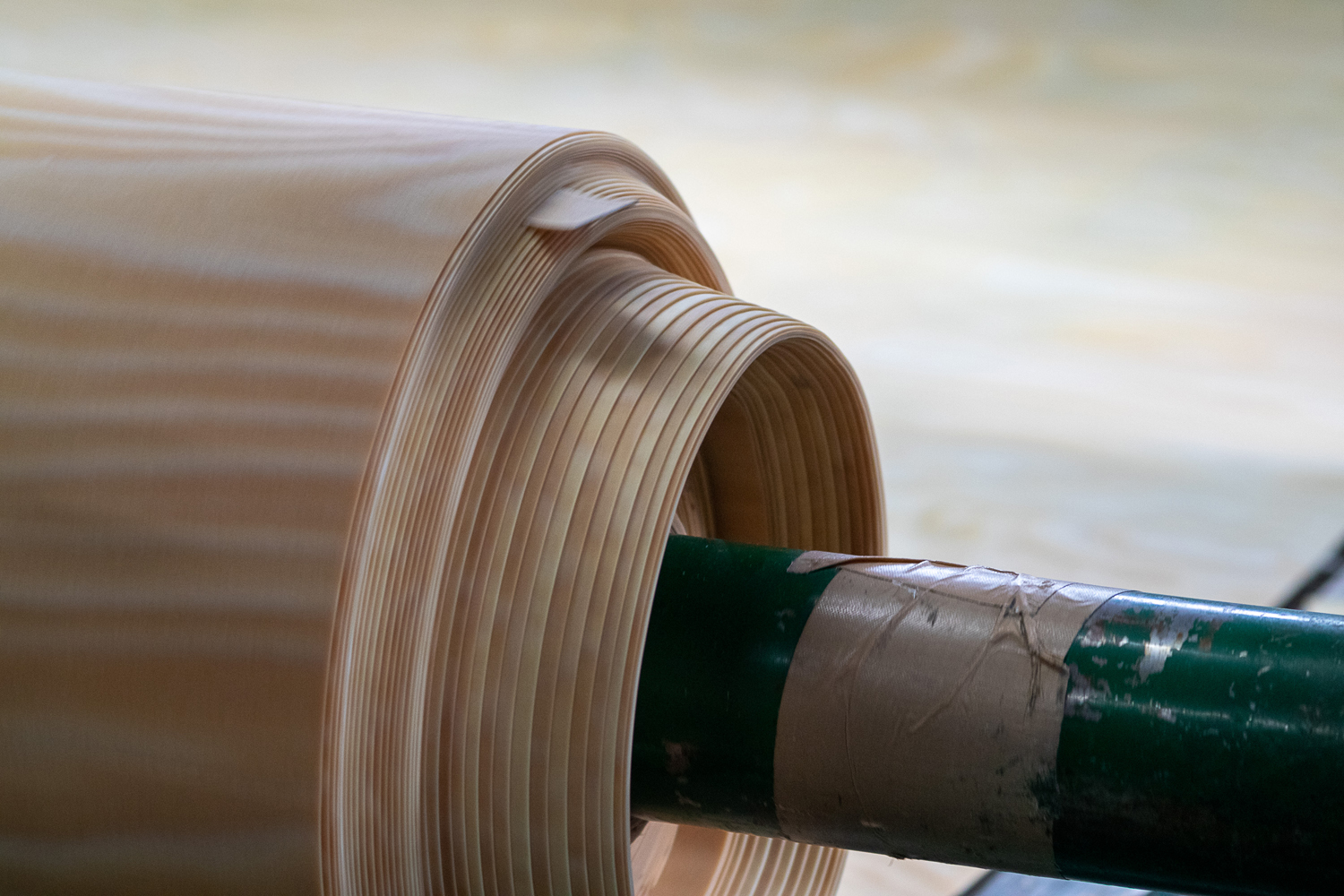
Freshly milled veneer
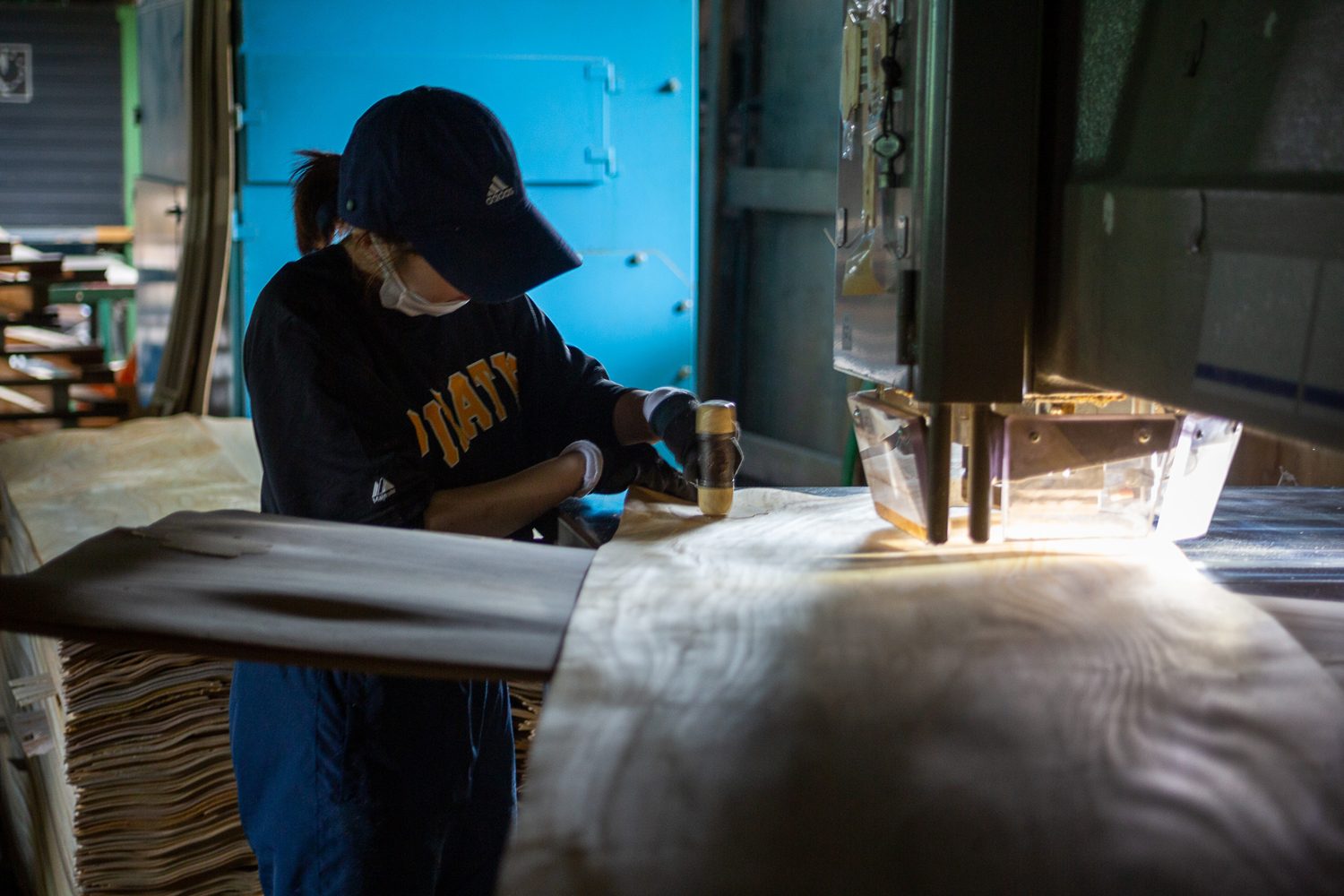
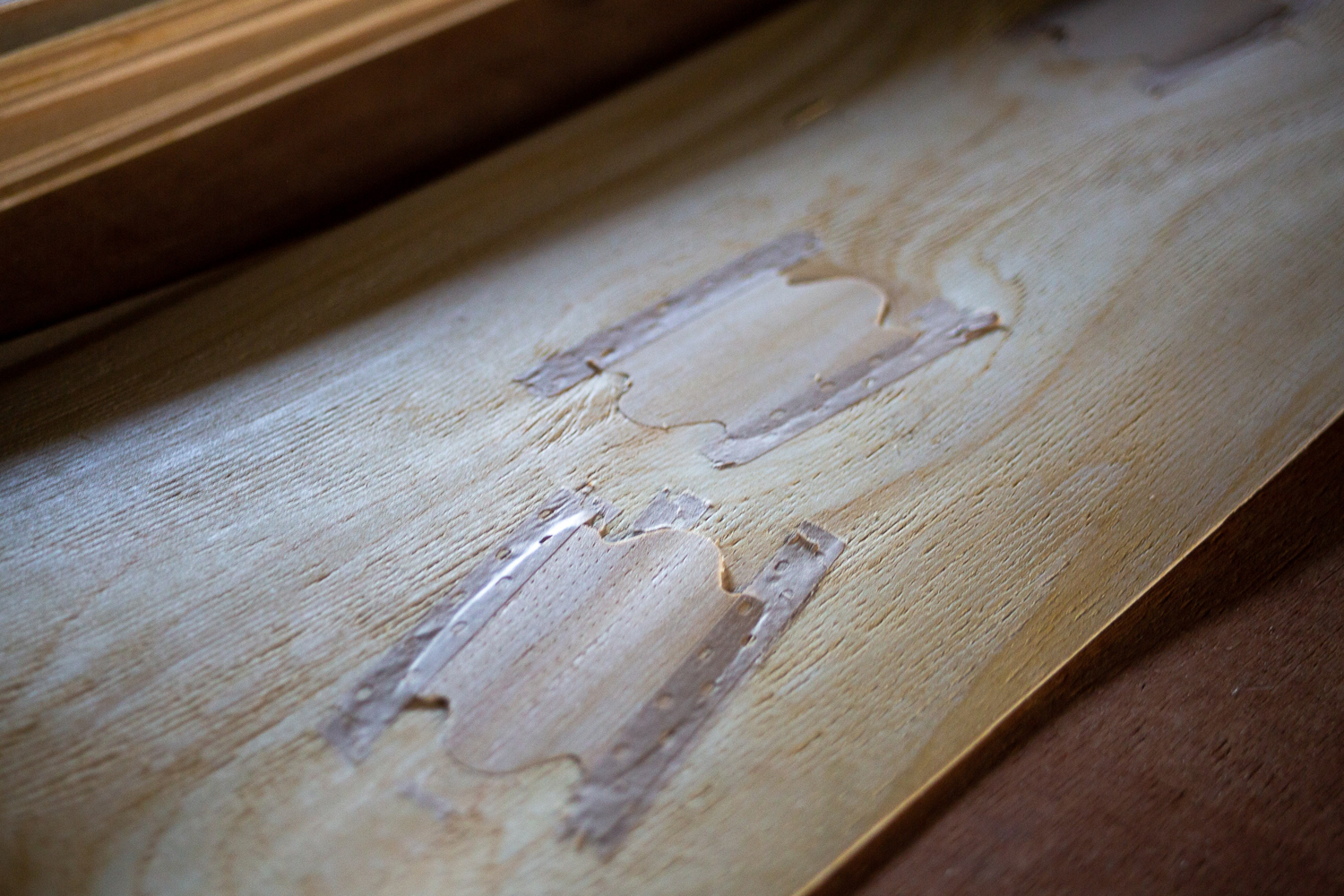
If there are significant knot holes in the veneer, they are patched up
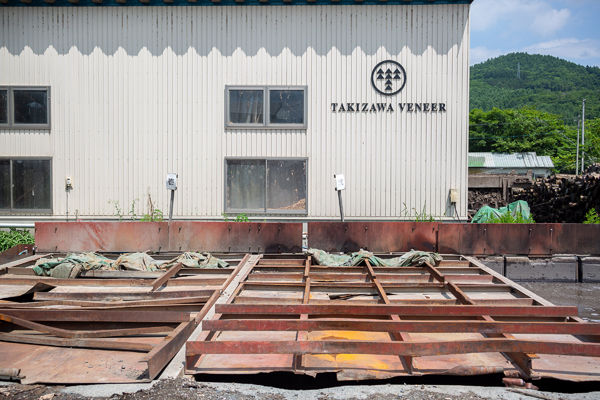
Takizawa Veneer Co., Ltd.
Head Office: Nokanan-cho1000, Ashibetsu, Hokkaido, Japan
Tel.:0124-27-3111
FAX:0124-27-3113
Website
PLYWOOD laboratory
Website